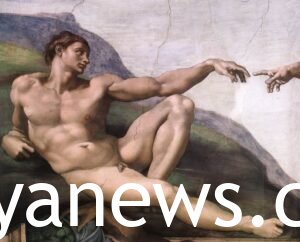Adam and Eve: The biblical story of Adam and Eve has captivated the imaginations of people for centuries, serving as a foundational narrative in many religious and cultural traditions. While the tale is well-known, there are several intriguing aspects and lesser-known details that add depth to the account of the first man and woman. Here are 9 seriously interesting facts about Adam and Eve:
1. Creation of Adam
According to the Book of Genesis, Adam was formed from the dust of the ground by the breath of God, breathing life into his nostrils. This symbolic act represents the close connection between humanity and the divine, emphasizing the belief that humans are intricately tied to the spiritual realm.

2. Eve’s Unique Origin
Unlike Adam, Eve’s creation is described as being formed from one of Adam’s ribs. This act of God creating woman from man’s rib has been interpreted in various ways throughout history, with some seeing it as a representation of equality and partnership between the sexes, while others have used it to justify certain gender roles.

3. The Forbidden Fruit
The story of Adam and Eve is often associated with the forbidden fruit from the Tree of Knowledge. While the Bible does not specify the type of fruit, it has become widely depicted as an apple in Western art and literature. The concept of the forbidden fruit serves as a powerful metaphor for the consequences of disobedience and the pursuit of knowledge.
4. The Serpent’s Deception
The serpent, often identified with the devil, plays a crucial role in the temptation of Eve. It is intriguing to note that the Bible does not explicitly state that the serpent is Satan, leading to various interpretations and debates among scholars. The serpent’s cunning persuasion adds a layer of complexity to the narrative, prompting questions about the nature of temptation and human choice.
5. Naked and Unashamed
Before eating the forbidden fruit, Adam and Eve were described as being naked and unashamed. This innocence and lack of self-consciousness highlight the purity of their existence before the fall. The subsequent awareness of their nakedness symbolizes the onset of shame and vulnerability, marking a significant shift in their perception of themselves and each other.
6. Expulsion from Eden
The consequences of Adam and Eve’s disobedience led to their expulsion from the Garden of Eden. Cherubim and a flaming sword were placed at the entrance to prevent them from returning. This event raises profound questions about the nature of humanity, sin, and the pursuit of redemption.

7. Cain and Abel
Following their expulsion, Adam and Eve became parents to two sons, Cain and Abel. The tragic story of Cain’s jealousy and the resulting murder of Abel sheds light on the complexities of human relationships and the consequences of unchecked emotions. It serves as a cautionary tale about the destructive power of envy and resentment.
8. Seth’s Lineage
While Cain’s lineage is marked by tragedy, the Bible also mentions another son of Adam and Eve, Seth. The descendants of Seth are portrayed as righteous and devoted to God, leading to the preservation of the righteous lineage. This aspect of the narrative showcases the theme of divine justice and the importance of maintaining faith in challenging times.
9. Longevity of Adam
According to biblical accounts, Adam lived for an astonishing 930 years. This exceptional lifespan adds a mystical element to the story and prompts speculation about the symbolic significance of such longevity. The biblical narrative, with its combination of historical and symbolic elements, continues to spark curiosity and reflection on the nature of humanity’s origins.
The story of Adam and Eve is rich with symbolism, moral lessons, and theological implications. Exploring these seriously interesting facts adds depth to the narrative, inviting further contemplation and interpretation across different cultures and belief systems.
WRITTEN BY COLLINS


Comments are closed.